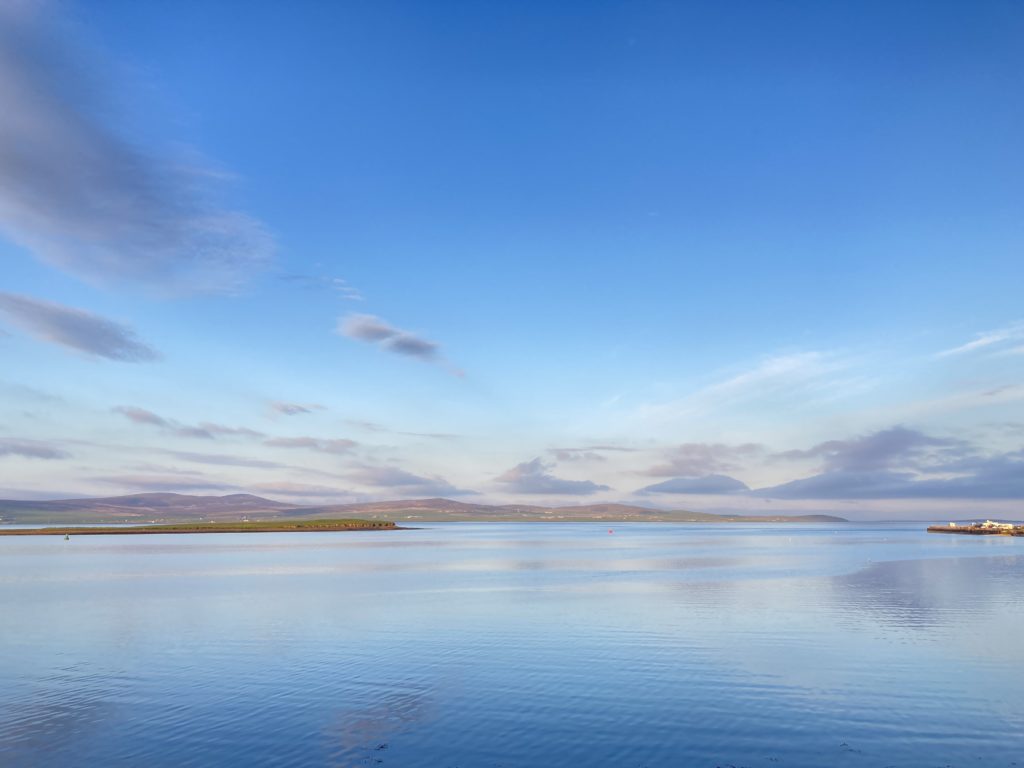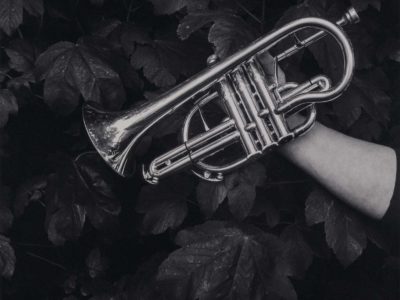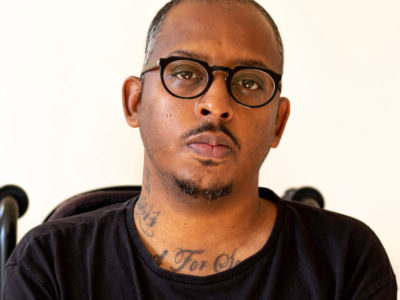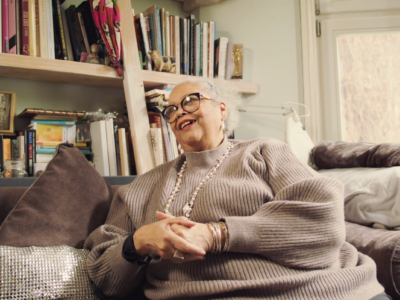Art questions… with Ilana Halperin
We spoke to artist Ilana Halperin about her life as an artist and her fascination with geology and art – from volcanoes and meteorites to Iona marble.

Ilana Halperin, Iona Marbles Meets Parent Material, 2022
// How did you become an artist?
I don’t know how, or when, I became an artist. Ever since I was small, I have loved making things. When I was a teenager, I went to a government supported High School for the Arts (New York High School of Performing Arts). At 13 you had to bring along your portfolio, there was an ‘audition’ with drawings tests, and an interview. I was obsessed and went into the sculpture department as soon as I could. There I trained in stone carving, but I am not sure which part I loved the most – the stone, or my amazing and extremely queer teacher who blasted opera and created an extremely safe environment for us. For many years, I was involved in both art and acting. At university, I trained with the Moscow Arts Theatre, and after a while my professor said, ‘Ilana, at some point you are going to have to decide if you want to be sculpture or make sculpture.’ I chose the second.
// What’s your relationship to the natural world and how does that translate into your artistic practice?
I became interested in geology through my early training as a stone carver. For over 20 years my work has explored connections between geology and daily life, to find new ways of imagining our relationship to the natural world. Drawing parallels between very personal events, for example, when I was born or when my father died, with the birth of a volcano, has allowed for a space to think about our place within the geological time continuum from a more intimate perspective.
Through my work, I have celebrated my birthday with a volcano born the same year; boiled milk in a 100C (212F) sulphur spring; talked with geologists inside a lava tube inhabited by life-affirming bacteria; spent time with geology collections formed inside the body; examined minerals found below the streets of New York and held the Allende Meteorite, the oldest known object in the solar system, between my hands. In the continual exploration of moments of connection between what is animal, vegetable, mineral – the wonder and shock of our geological world continues to amaze and humble.
// How has your life story shaped your art?
As a queer, Jewish land artist, and an immigrant living in Scotland, my experiences as part of a diaspora and LGBTQ+ community inform every aspect of how I approach my work, and the sensibilities and sensitivity I bring to my practice. Throughout my career I have worked collaboratively with people across the arts and sciences – from earth scientists, anthropologists, art historians and curators, to caretakers of hot springs and caves. A certain kind of openness, and a different sense of time (perhaps more geologic than cultural) permeates personal and geological trajectories within my practice.
For example, half of my life ago in New York I was walking down the street near the now unrecognisable Bowery. There was a man selling old books on the sidewalk, laid out on a sheet. One caught my attention, a book called Volcano about volcanoes from around the world. In retrospect, every project I have ever undertaken can be traced to a picture in this book. It features the places I have gone to meet volcanoes (alive, dormant and extinct), to understand what it means to be human and rock and both at the same time. When I found that book, I had no idea what an impact it would have. My early love of stone has followed me throughout my life, and so there is not so much a distinction between my life story, and the story of my work, as they are so intimately connected – my significant birthdays are shared with the Eldfell volcano, the project Minerals of New York came out of an encounter with a garnet that was also born in New York City, and so on…

Orkney, Scotland. Photo by Ilana Halperin.
// How does the Scottish landscape inspire your work? Do you see any connections with other landscapes you have worked with?
Whether standing in the middle of a vast volcanic crater in Sicily; scrambling over Manhattan Schist in New York City or marvelling at the basalt columns of Staffa – my love of geology and geological history have made me the artist that I am today. As the early Scottish geologist James Hutton said, ‘The present is the key to the past’. Witnessing the ancient geology of Scotland made me want to learn and understand more about how these remarkable natural sites formed. As these sites are home to some of the oldest rocks on earth, I began to search for the youngest – in Iceland, Hawaii and Japan – to see and work with the processes that have formed the ancient rocks I now call home.
More and more, I find it helpful to think about the idea of living in geologic solidarity. We are part of a growing geosocial family with shared responsibility that extends across the surface of the Earth. When I spend time with 500 million year old stromatolites in Orkney, I have felt memories of ancient coral reef in Japan. Recently, in order to think about possible life forms on Mars, I went to Iceland with geoscientist Dr Claire Cousins and art historian Dr Catriona McAra to observe extremophiles – life forms that can survive and exist in extreme environments – and I found myself thinking – maybe many of us are extremophiles too. Really, as we are all formed from the same material, in the early moments in the birth of the universe, looking for links between Scotland and the rest of the geologic world is a shorthand for looking for the ways we are all interconnected.

Detail of Iona Marble meets Parent Material by Ilana Halperin. Photo courtesy of Patricia Fleming Gallery.
// Can you talk about the process of making Iona Marble meets Parent Material?
The work grew out of a project called The Rock Cycle (Yamaguchi) curated by Fukuoka-born, Scottish-based curator Naoko Mabon and was first shown at the Pier Arts Centre on Orkney. Within this series, the little white marbles with yellow-green serpentine veins come from the Isle of Iona. A small marble quarry was active on the south-east coast of Iona, closing around 1918. The stone was used in Iona Abbey and in buildings around the world. Locally it was believed to have healing powers and to protect against shipwreck, fire and miscarriage. To create this work, I made new drawings for each piece of marble, inspired by trace fossils which record the actions of life (rather than, for example, more known fossils – which we can imagine as a presentation of death.) Then, with long terms collaborators at Dundee Contemporary Arts Print Studio, we engraved the drawings into the surface of each marble on a laser etcher. The lines were then filled with field ink made from a core sample of soil from the farm of James Hutton (1726–1797), known as the “Father of Modern Geology”. The soil is composed of approximately 370 million years old Devonian Old Red Sandstone and comes from the bottom layer of the core sample, usually referred to as the “parent material”.
Iona marble began its material journey first as carbonate life forms – such as coral and stromatolites – that over time were crushed and compressed into limestone, and then with heat and pressure, cooked to become marble. As we are also carbonate life forms through our teeth and bones, we can connect to this material in new ways through imagining ourselves as part of a deep time calcium carbonate family tree. These works draw connected geologic stories encountered across Scotland together in one work.
// How can your ‘geologic stories’ make us rethink our relationship to the environment?
Over the last few years, as my work has grown and evolved, I feel even more deeply aware of the ways we are part of a deep time family which extends into the remote past and future – a calcium carbonate family tree stretching from stromatolites, fusulina and ammonites to mollusks, sirenians, starfish, coral and fish, to limestone, marble, our teeth and bones. Mountains and rocks, which remind us they are the product of the living, can become reanimated again, an infinite source of narratives, deeply embedded in our connected identities. As we are carbonate life forms, can looking more closely at our geologic neighbours, traces of former life that live in proximity, help us to connect in felt, material and corporeal ways to our place in the deep time story – help us to care about our deep time family? Ultimately, I really hope so.


